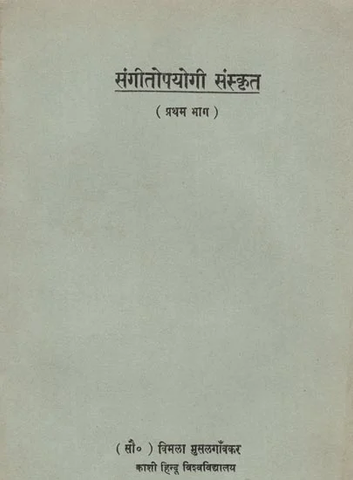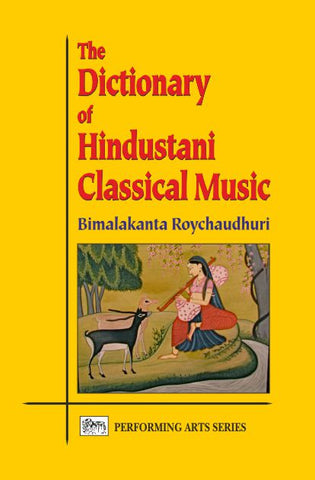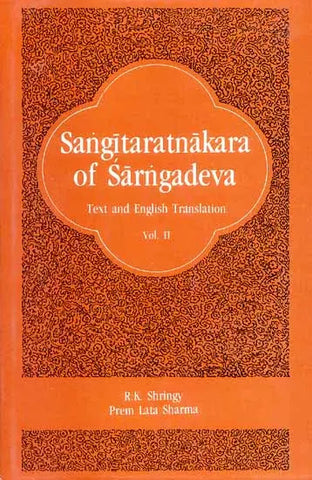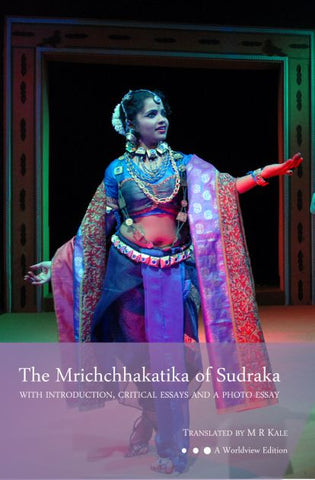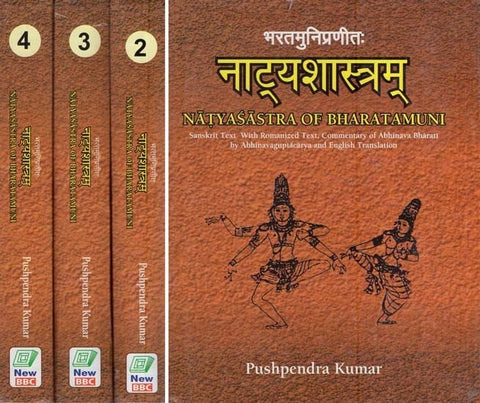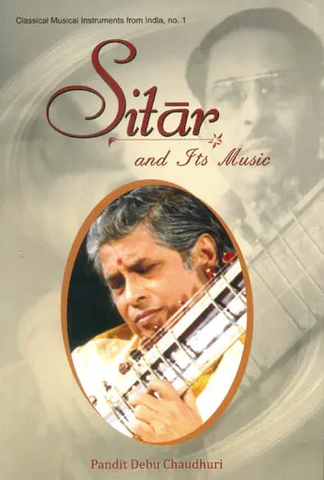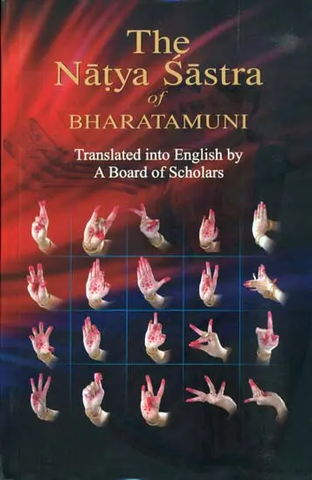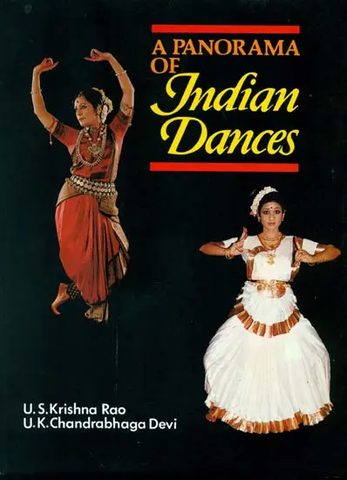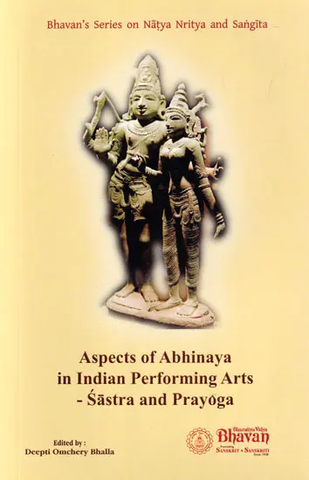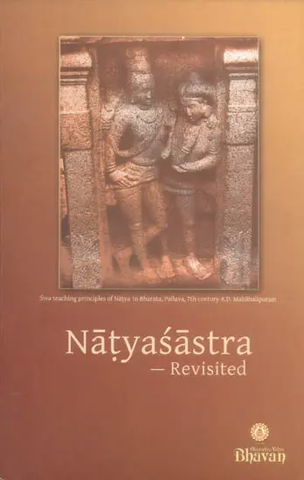Your cart is empty now.
There is no better formula than run the gamut as a practitioner. A Tantra Sastra Paradigm (Natya can also be called as one such paradigm)exemplifies conception of the supreme personality of God, the dual aspect when the god himself becomes the Universe beyond Purusha and Prakriti - the Complete, WHOLE, an undivided 'one' With the force of dancing comes the discovery of THE 'I'...Brahman..I AM! What is that essence or that principle that connect ONE to the dance, connects dance that LIFE, connects one with audiences, crossing all barriers? ?An Artiste who is privy to the intricate and integral nuances of the art form, can recapture the true experience of the heart, after a recital. Nevertheless, it cannot exactly be an equal feeling, as very often the artiste would land one a writer's block, posed with an inexplicable experience The endeavour in this book, has been to establish a co-relation between Natya and Tantra.
Dr. Padmaja Suresh is an established exponent of Bharatanatyam, She has had extensive training from topmost Gurus of the country covering a wide spectrum in dance and music and has been coinciding both creativity and purity. Her Traditional and contemporarily related dance productions have won her acclaim in the country at major festivals and as a cultural ambassador abroad.
Padmaja is a Commerce and Law graduate, holds a diploma in choreography, a Masters in philosophy and her Doctoral thesis is on 'Science of Tantra and the Art of Natya-a-co-relative study.
She has performed at the Rashtrapati Bhavan in the august presence of the Heads of States and the President of India. Her Institution, Aatmalaya, also has a wing Kalachaitanya for propogation of arts amongst lesser-privilged children. Her titles and awards, include Singaramani, Bharatakalasreshta, Kiran Achievement for National Excellence and Nartananipuna>
The term Tantra has a wide connotation. Originally, it must have stood for knowledge which is spread - 'Tantrayate vistaryate jnanam anena' ie-by which knowledge is spread or developed. Tantra is deeply rooted in and is the ultimate manifestation of the principles of 'Vedanta'. As per the Tantras, Siva - He saw, he thought - May I be many. From the Brahman with Sakti issued Nada (sound) and from Nada appeared Bindu. The Tantras also speak of three Bindus - Siva maya, Sakti maya and Siva-Sakti maya. Tantra seen in this perspective and within the Indian background has been mostly confined and restricted to temple premises and priests, religious rituals, spiritual practitioners, esoteric and occult believers. It cannot be accepted as even remotely divorced from divinity within man and the Vedantic spirit. The relationship between man and nature, man and God, and man and man is explored. Several books on Tantra have been written which interestingly expand the scope of the subject and allay unsolicited misconception and apprehension. Every book makes us devour the vast wealth of our land.
Siva and Uma are again attributed with creation of Natya at the behest of Brahma who appealed on behalf of the Gods. Natya Sastra with its practical application has been uttered by the self- born Lord Brahma. Natya Veda was evolved as common to all varnas (castes), social or religious barriers. The consecration of the Sanskrit drama playhouse followed the ritualistic consecration before construction of places of worship, propitiation to the natural elements and respective deities to ward off obstacles and calamities and the offering of obeisance to the Guru, the Natyacharya [the teacher] by the Patra [the taught].
The relation of rituals to Natya can be observed through the commonality of devotional songs called Bhajans and Keertanams, Devarnamas, Abhangs and Aarti that are sometimes sung in conjunction with the performance of puja. The Puja symbolically represented are those in temple rituals. The sages are the ones who received initiation on Natya in the early stages of its origin from Natya Veda. The human body is certainly one piece of classic engineering, designed to enable positive physical and mental and above all spiritual enhancement. It is well upon the individual to understand, utilize and then usher in great sense of fulfillment. The Lord has gifted us this wonderful Yantra - our body and we have to generate, nurture and promote its well-being. This key factor is noticed both in the practice of Tantra and Natya. The latter employs the body and the various qualifying and embellishing costumes, ornaments and accessories like stage -crafts, sets, properties and make-up. The physical shackles and barriers are removed and the Sadhaka transcends to a divine realm and with him also the closely empathizing groups of people. RASA, aesthetic joy, is realized only when the life forces and dramatic stories are first appropriated within and then transmitted across to the world around in creative, ecstatic and emancipatory ways.
Dance or drama weaves an already written and popular story often. It is conducive to auspiciousness and follows a regulated discipline. It is meritorious, sacred and destructive of sins. He who listens to this, he who performs this and witnesses it with attention, shall attain that goal which is reputed to be the goal of the Vedic scholars. The man who perfectly looks after the art of music and dance attains the meritorious goals of divine grace and salvation. The Tantri [the priest using Tantra as integral part of worship] has similar goals and unifies himself with the innate spirit of the diety worshipped. Hence, the thesis to co-relate the two wonderful and deeply connected streams.
In this book, chapter one deals with Antiquity and Meaning of Natya and Tantra while Chapter two describes the Process, Practices and Methods followed in the two streams. Starting from Tantra origin, traditions, relation between Tantra and Vedas, History of tantra, Hinduism, Tantric Guru Dattatreya, we move on to Natya origin and traditions, ancient and medieval history, the uprising and correlate the two traditions, focusing on the common Vedic origin. Tantra practices include mantras, yantras commonly used and their significance and the meditational aspects of the Tanmatras, the Chakras, the Guru-Sisya parampara, Natya pracnces Include technique, styles, music Abhinaya introduction to Rasa and other collateral but useful fields. Chapter three highlights the Place of Symbolism and its relevance to Tantra Sastra and Natya Sastra. We have topics on Sri Yantra, Yoginis, Nadis, Marmas, Breath, Sound, symbols of Hinduism, Tantric Yoga and Mudras, Tantric Buddhism, Natya Hastabhinaya, the symbolism of Sanskrit theatre. Chapter four is on the Schools and Branches of Tantra and Natya. Topics covered herein are Saivism, Saktism, details on Vajrayana Buddhism, highlight on Malabar school, the rationale behind the distinct dance styles, the traditional repertoire of Bharatanatyam, the style of music, Kundalini Sakti, types of Gurus and aspects of worship on Chakras. The next chapter is discussing the philosophy of Advaita and Visishta Advaita in relation to Tantra and Natya. And finally, the conclusions.
Why this Topic?
The music started, my movement began, accelerated, gathered momentum and despite my desire to know, I just could not hold on to it any further than merge with the music which gathered me into its beautiful wave. My feet acted instinctively and spontaneously. The 'jingles' on them seemed to ring loud into my ears like a reminder that they were now on a divine journey like the bells before the altar. My biological heart no longer belonged to me as I became someone else and felt him or her and I moved around in this new character's role and performed a myriad emotions, fleeting across my entire being. I swung my arms, turned, pirouetted, slid, swirled, stretched and stamped my feet. ..
. .. While portraying so many varying moods, I felt a catharsis of all pent up emotions. Finally, SOMETHING landed into my being while I continued to dance in the world of stars and played in the astral realm. I simply felt it filling my whole being which I call the SHANTA Rasa, a feeling of nothingness, emptiness, zero. This zero happened within. It was so completely zero that it remained the only truth. The infinite seemed to encircle all the finite contained in the drama danced. The world seen by the biological eyes disappeared and was absorbed into this small frame itself The natural elements seemed to vibrate from within, the sky made the dancer agile, the water made her buoyant" the air made her light, the earth made her firm, the fire made her sparkle ..... When the body consciousness faded, the highest truth of the BEING that IS was KNOWN. This then BECAME the many. My identity Padmaja was long forgotten when the dance took over. But I can recount and recollect MY experience? Who is this NEWT now? This 'I' which raised its head, even amidst the audience to see me and show me, at the same time, that the drama I enacted was after all, unreal.. .. and the only truly real that ever could be, is and will be is this ‘I’.
This is what is in every spiritual form of dance - ritual dancing, trance dancing and classical dances like Bharatanatyam which originated as a ritual itself. An exponent, Sadhaka, fails every time she/he tries to derive THAT through the biological manager. Instead, putting on the dancing jingles, Ghungroos, Selangai, the journey starts ...
| Dedications | ||
| Acknowledgements | ||
| Introduction | ||
| Chapter - I: Antiquity and Meaning of Natya and Tantra | 1-22 | |
| 1 | Tantra Origin and Traditions | 1 |
| 2 | Tantra and the Vedas | 2 |
| 3 | History of Tantra | 6 |
| 4 | Hinduism today | 6 |
| 5 | Tantric Guru Dattatreya | 7 |
| 6 | Natya Origin and Traditions | 8 |
| 7 | The Origian of Drama | 11 |
| 8 | The Uprising | 14 |
| 9 | The Two Traditions of Tantra and Natya with historical parallels. | 15 |
| Chapter - 11: Process, Practices, Methods followed. | 23-58 | |
| 1 | Tantra Practices | 24 |
| 2 | The Meditational aspects | 26 |
| 3 | The Tantric Chakras | 27 |
| 4 | Guru and Sisya | 28 |
| 5 | Bharatanatyam | 30 |
| 6 | The Technique & style | 31 |
| 7 | Definition of Abhinaya | 34 |
| 8 | What is that entity called Rasa? | 41 |
| 9 | The inter-relation in the branches of both streams | 48 |
| Chapter - III | 59-128 | |
| 1 | Symbolism and its relevance | 59 |
| 2 | Lalita Tripurasundari, the Red Goddess | 62 |
| 3 | Formation of the Shri Yantra | 63 |
| 4 | The Nine Mandalas of the Shri Yantra | 64 |
| 5 | Mandala of Sixteen Petals | 65 |
| 6 | Mandala of Eight Petals | 66 |
| 7 | Mandala of Fourteen Triangles | 66 |
| 8 | Outer 10 Triangles | 66 |
| 9 | Eight Triangles | 66 |
| 10 | The Four Weapons | 67 |
| 11 | Yantra Mantra Tantra of Lalita | 68 |
| 12 | Lalita as the Whole Universe | 70 |
| 13 | Sixty four Tantras | 71 |
| 14 | Planets | 73 |
| 15 | Yoginis | 73 |
| 16 | The Nadis and the Marmas | 73 |
| 17 | Breath is Time | 74 |
| 18 | Sound | 75 |
| 19 | Chakras and the 64 Y oginis | 75 |
| 20 | Important themes and symbols in Hinduism | 76 |
| 21 | Tantra Mudras | 78 |
| 22 | Tantric Yoga and Mudra | 79 |
| 23 | Tantric Buddism and Mudras | 82 |
| Advaita and Visishtadvaita Vedanta philosophies in relation to tantra and Natya | ||
| 1 | Advaita compared to Tantra philosophies - | 167 |
| 2 | Non duality: Advaita Vedanta | 169 |
| 3 | Brahman | 170 |
| 4 | Maya | 170 |
| 5 | Application of the Mahavakyas - lithe great sentences", a parallel stuydy with Natya | 171 |
| 6 | Kashmir Saivism | 173 |
| 7 | Advaita and Science | 174 |
| 8 | Qualified non-dualism: Visishtadvaita | 177 |
| 9 | Brahman, the Ultimate Person | 178 |
| 10 | The traditional favorites in worship who are often the protagonists in performing arts | 179 |
| 11 | Famous Bhakti saints whose contribution to music and dance is immense | 180 |
| 12 | The role of Bhakti Bhava and Prema Bhava in dance - A dancer's Quest | 181 |
| 13 | Brahman in Tantra | 184 |
| 14 | Unitariness with Natya & 15. The Absolute - Vedanta & Tantra /Natya | 185 |
| Conclusion | 193 | |
| Appendix | 204 | |
| Bibliography | 210 | |
| Glossary | 214 | |
| 24 | Natya Hastabhinaya (Hand Gestures) | 90 |
| 0 | Difference between the two | 91 |
| 26 | Symbolism of Deities represented in dance | 91 |
| 27 | Non-combined and Combined gestures of Natya | 93 |
| 28 | Nritta hastas | 119 |
| 29 | The Supreme dancer Siva | 122 |
| 30 | The Sanskrit theatre form | 126 |
| 31 | The relevance of these Symbolizing art forms | 127 |
| Chapter - IV | 129-166 | |
| Schools and Branches of Tantra and Natya | ||
| 1 | Hindu Tantra | 129 |
| 2 | Features of Saivism | 131 |
| The rituals | 133 | |
| Saktism | 134 | |
| Sakta worship | 135 | |
| y ogini Cult | 138 | |
| Buddhism | 140 | |
| The Noble Eightfold Path | 141 | |
| Emergence of the Vajrayana /Tantrayana/Tibetan Buddism | 141 | |
| Tantric practices in temples of Kerala -Malabar School | 143 | |
| Tantric connotations in emergence of schools and branches of Natya | 146 | |
| Elements that broadly classify the schools -The Rationale behind the distinct styles | 149 | |
| The Tradition followed by the schools | 152 | |
| Rhythmic Features of Natya and the significant of music | 153 | |
| Tantric worship of the Chakras | 156 | |
| Kundalini Sakti | 160 | |
| Gurus | 163 | |
| Chapter - V | 167-192 |
Delivery and Shipping Policy
- INTERNATIONAL SHIPPING
- Rs.1000-1100/kg
- ESTD. Delivery Time: 2-3 weeks (depending on location)
- Bubble Wrapped with Extra Padding
- NATIONAL SHIPPING
- NCR: Rs. 30/half kg
- Standard: Rs. 80/half kg
- Express shipments also available on Request
- ESTD. Delivery Time: Ranging from 1-4 days up to 7 business days (Depending on your choice of Delivery)
- TRACKING
- All orders; national or international, will be provided with a Tracking ID to check the status of their respective orders
- Depending on the Shipping Service, Tracking ID may be used on their respective tracking portals
Frequently Asked Questions (FAQs)
Domestic Shipping: 3-4 Days (after shipping)
International Shipping: 1-2 weeks (based on your location)
You will receive an email once your order has been shipped or you can email us if you didn't receive tracking details (info@mlbd.co.in)
Every book that we sell is the latest edition except all the rare books
Yes, we do provide free shipping, only on domestic orders (within India) above Rs.1500


